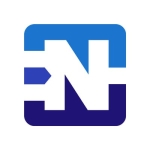I use the solution in my company to block threats, detect vulnerabilities, and protect the organization's internal network.
The most valuable feature of the solution stems from the fact that its UI is good since it offers options. In terms of being compliant with the firewall security standards, the product falls in the first or second place. The product can also be considered as NGFW. In general, the product is user-friendly.
The reporting part of the product is an area of concern where improvements are required. Compared to Palo Alto Networks VM-Series's reports, FortiGate NGFW provides users with reports that are easy to understand.
I have been using Palo Alto Networks VM-Series for three to four years.
The product's stability is good. Considering the cloud availability, I can say that the product is 99.99 percent stable. The firewall functions properly on the cloud, and there has been no downtime in the last couple of years. Unless the cloud services from Microsoft Azure go down, the firewall works properly.
My company has 1,000 users of the product, but not all of them are connected to the product all the time since my company has three different fire products running in the cloud. I would say there are around 600 Palo Alto Networks VM-Series users.
The technical support for the solution is very good.
The product's deployment phase is not complex. The tool is easy to deploy.
The solution is deployed on the cloud.
There is a need to make payments toward a yearly subscription-based model in which you need to add modules that you want to use in your company.
I can't elaborate on how the product was deployed in our company's existing infrastructure since the product was not deployed by our company, as the vendor handled it. The product can be deployed on the cloud platform you want to use. If you are using Azure's cloud services, then we select VM-Series, take care of the configurations, and upload the required details to get the product.
In terms of the product's ability to improve our company's network security posture, I see that the tool keeps our systems protected since all the network traffic is routed through the tool. The tool provides protection against any malicious traffic that attempts to get into the company network as such networks get blocked and quarantined by the firewall. Been blocked on the firewall network. Malicious components in the network don't enter our company's internal network, so the users are protecting the systems attached to the internal traffic.
My company has not integrated the product with any third-party software.
Speaking about the benefits of dynamic scalability, I would say that my company has not used the product's scalability features. I don't think there is anything wrong with the tool's scalability functionalities.
The tool is good for enterprise-level organizations because it has many options for users in its office. The product also comes with a lot of add-ons. If you can leverage the benefits of everything the product offers, then it can be useful. It is easy if you want to integrate the tool or connect it with other applications or third-party software, and you can do cloud monitoring and SIEM. The tool also works with XDR products. In general, the tool has its pros and is good software.
I have not encountered any issues with policy management in the product.
The product helps find vulnerabilities in the system, especially opened ports and unwanted ports that are open. If there are any issues, you can explore your system further with Nmap and with the help of a given IP address.
I rate the tool an eight out of ten.
















